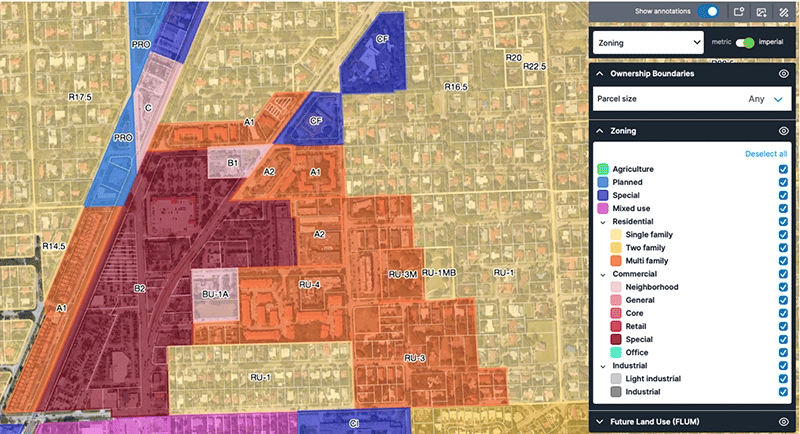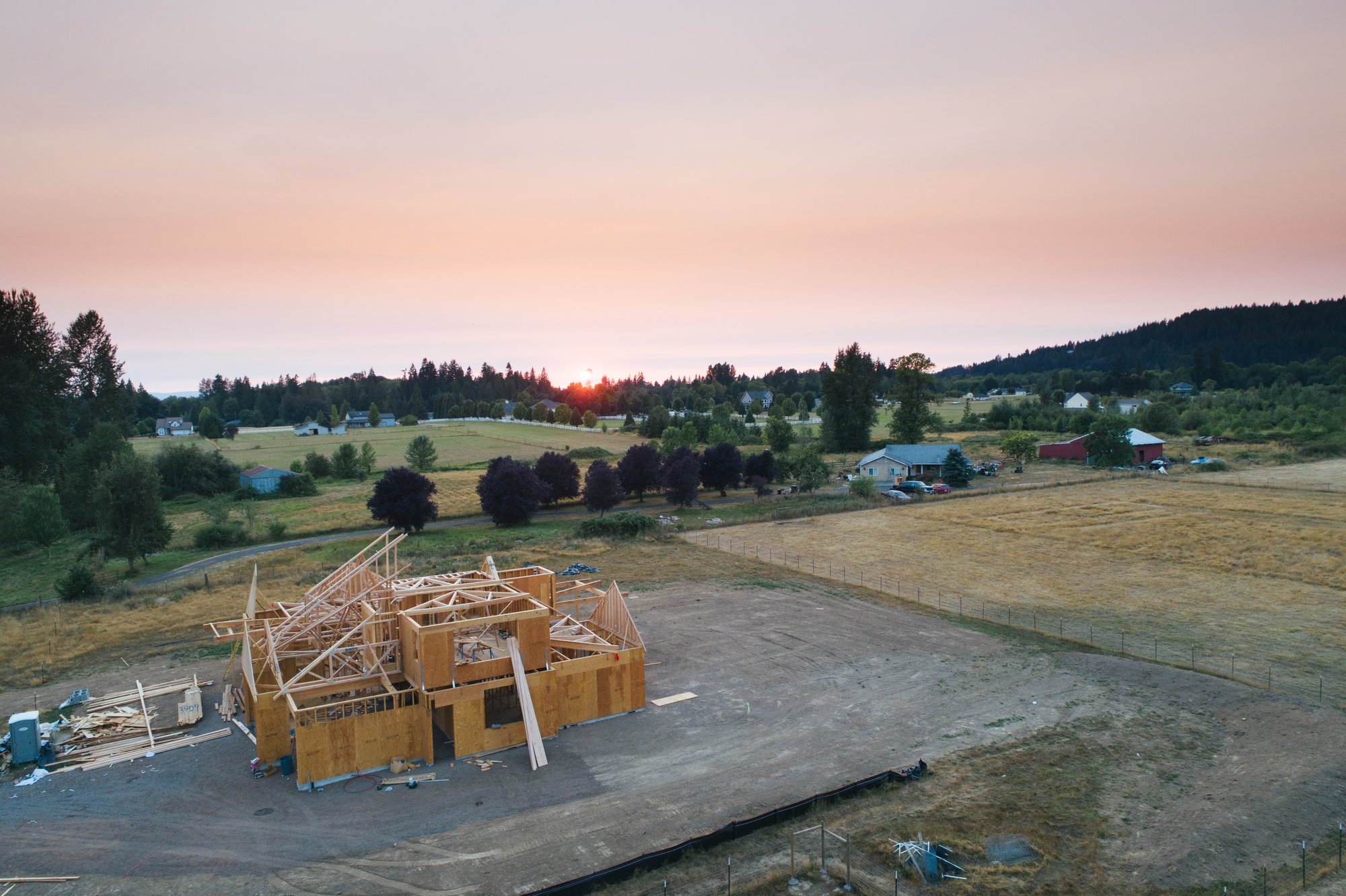The zoning system holds the key to understanding what you can do on any site. But the information available about the zoning that applies to your site will vary depending on where you are in the State.
Florida has 67 counties – meaning there are a lot of different codes and zones, and lots of different city and county websites to visit to understand these. And that’s before you start to look at the way that these uses will change in the future, with the Future Land Use (FLU) data.
In this blog, we explore what all these terms mean for developers, the benefits of using this data, and how with LandTech, we’re making this easier than ever before to find and interpret.
The difference between zoning, FLU, and land use
Zoning, Future Land Use and Land Use are all different categorizations of land that show you what types of development will be allowed on a specific site now and in the future.
They all provide a slightly different piece of the puzzle.
- Zoning – what uses are permitted or allowed in this area i.e mixed use, multi family, single family or commercial.
- FLU – what uses will be permitted in the future, when the zoning maps are updated. Identifying the changes between Zoning Maps and FLU is where the opportunities are.
- Land Use – what current active uses are on the land. The Land Use code will specify if a site is in use, and if so, what type of use it is.
Using all these land classifications together will help you to act fast if the current land use aligns with what you need, but also to think long-term and strategically by leveraging FLU.
Below, we break down what FLU and vacant land are in more detail – and how you can leverage this data as a developer.
What is Zoning?
Zoning regulations categorize the types of land use that are allowed in different areas of a municipality (such as a city). Zones typically include residential, commercial, and industrial.
Because the value of land is dictated largely by an understanding of what you can and can’t do with the land, having a clear understanding of what the current and future zoning provisions are is vital.
You can read more about zoning and its impact here.

What is Future Land Use (FLU)?
FLU is a city’s visual guide to future planning. It gives a picture of what the land use will be for different areas of land in years to come.
The aim is to ensure that housing and places of work will continue being built in the places that they are needed and are safeguarded for communities of the future. Normally the vision is for 25 years in the future – so gives a long-term perspective of how a community is set to look.
How to use FLU as a developer
FLU provides you with a long-term view of how the development landscape is set to evolve – enabling you to map out future projects more effectively.
It can help you to be more strategically-minded and align with the local community vision.
In a practical sense, developers can search on a county-level for an overview of what zoning rules are set to be in place in the future and compare this with the current state of play to identify where the changes are planned to happen. For example, if you specialize in multi-family units you can see where this type of housing is set to be allowed in the future.
It can also help you predict how the neighborhood around any current projects is set to develop so you can gauge demand and pricing more accurately.
What is Land Use?
Land Use is simply a way of codifying the existing usage of each parcel of land. Each municipality (typically at a county level) classifies each parcel based on how it is currently being used. Typically each jurisdiction has a property/land use code system. By comparing the current use code against the usages that are allowed by the zoning codes, you can identify opportunity sites.
What is vacant land?
And as the title suggests, Vacant Land is a plot of land with nothing on it. Or in some cases, there could be abandoned or under-utilized building structures on the site. Vacant Land is one of the Land Use codes that will apply in an area. Knowing where these vacant plots of land are will help you find the most profitable development opportunities.

The benefits of vacant land
There are a lot of benefits to developing on vacant land but the primary reason is often that costs are lower. Cheaper development costs can be a result of not having to pay for property tax and maintenance initially. Or, the fact that likely none, or very little, demolition will be required due to the limited buildings on site. Plus, as there’ll be no residential buildings in use, there’ll be no need to relocate occupants.
Another benefit is the flexibility that vacant land offers developers. The plot can be viewed as a blank slate to start your development on.
For these reasons, vacant land is highly sought after and the market can be very competitive.
Particularly in densely populated areas or high-activity markets, unused land can be few and far between.
That’s why as a developer, being able to proactively search for vacant land in just a few clicks can help you to get ahead of the competition.
And with LandTech, you can do just that – as well as check out the FLU for select areas.
How LandTech can help
With LandTech, our site-sourcing technology, you can use FLU*, zoning and vacant land data to find opportunities for both now and the future.
Our zoning layer is color coded and easily filterable so you can instantly see the zones you can develop specific property types in. Pair this, for example if you’re working in Tampa, with a Hillsborough county future land use map and see how these plots of land are expected to be used in the future for this specific area.
Vacant land lets you search and filter between non-vacant and vacant land.
Click through on any parcel to see information (if available) on:
- Address
- Area
- Zone
- Total building floor area
- Floor area ratio
Using zoning, FLU, and vacant land together can help you to unlock even more comprehensive insights into sites of interest and help you make data-backed decisions.
*in areas where data is available
Ready to find out more?
Speak to one of the friendly members of our team today to find out how LandTech can help you to spot opportunities now – and for the future.
Find out more